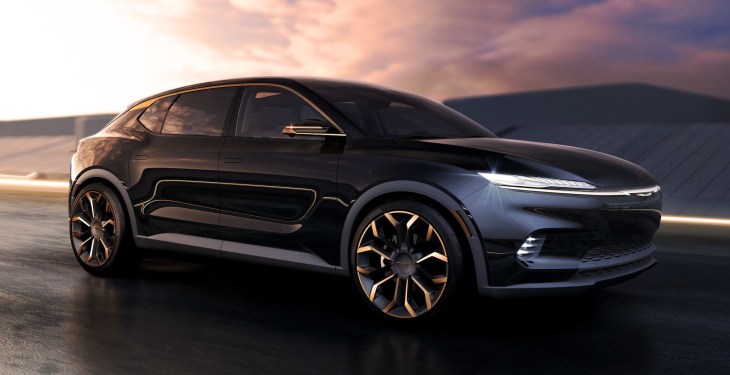Chrysler unveiled this week at the New York International Auto Show its Airflow Graphite Concept SUV, an all-electric crossover with 22-inch wheels, a sleek silhouette and automated driving features that gives a possible window to the automaker’s future.
The SUV will deliver up to 400 miles of range on a fully charged battery and come with fast-charging functionality, according to Chrysler. The Stellantis brand also touted a long list of tech in the concept vehicle, including the automaker’s STLA AutoDrive system with Level 3 automated driving capabilities.
This is just a concept, which means some heed should be taken when reviewing its specs. But with Chrysler planning to launch its first EV in 2025 and become a completely electric brand by 2028, this sporty concept could be help set the direction for parent company Stellantis’ $35 billion investment in bringing new electric vehicles to market.
Chrysler has been late to electrify, but Stellantis is going all in aiming to introduce more than 75 battery-electric models and sell five million EVs globally by 2030. The conglomerate, a joint venture between Fiat-Chrysler and PSA Group, doesn’t sell a fully electric vehicle. Its electrified lineup consists of just three plug-in hybrids: the Chrysler Pacifica Hybrid Minivan, the Jeep Wrangler 4xe and the Jeep Grand Cherokee 4xe.
The concept “represents the many possibilities on our brand’s road to an all-electric future,” Chrysler CEO Chris Feuell said in a statement.
The Airflow Graphite Concept looks more aggressive and dynamic than the all-electric Chrysler Airflow Concept the automaker unveiled at CES in January. This “alter-ego version” showcases Galaxy Black exterior paint, Cyprus Copper accent colors, a panoramic sunroof, as well as a full slate of cutting-edge technology.
The Airflow concept looks nothing like Chrysler’s original Airflow, a sleek, more air-resistant vehicle produced by the brand between 1934 to 1937. The name does imply the brand is seeking to tap into the creative thinking of that era, although hopefully with more successful results in the marketplace.
The tech inside the concept is a showcase of Stellantis’ larger plan to generate $22.5 billion annually from software in its vehicles that can sell passengers and drivers products and subscriptions. The concept includes three areas that are already under development: underlying electrical and software architecture called STLA Brain, software called the SmartCockpit that is being built in partnership with Foxconn to deliver applications to the driver such as navigation, voice assistance, e-commerce marketplace and payment services and finally, an automated driving system called “AutoDrive” that is being developed with BMW.
The concept’s STLA SmartCockpit “enables an extension of digital, work and home environments, all in sync to create a personalized experience for every passenger,” the automaker said in a statement. The SUV’s STLA Brain platform allows for over-the-air updates to “deliver new and upgraded features and functions that enhance and improve the vehicle throughout the ownership experience.”
